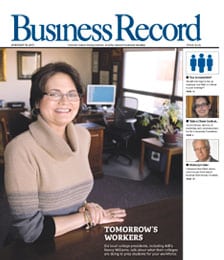American Express is on the slow track

.floatimg-left-hort { float:left; } .floatimg-left-caption-hort { float:left; margin-bottom:10px; width:300px; margin-right:10px; clear:left;} .floatimg-left-vert { float:left; margin-top:10px; margin-right:15px; width:200px;} .floatimg-left-caption-vert { float:left; margin-right:10px; margin-bottom:10px; font-size: 12px; width:200px;} .floatimg-right-hort { float:right; margin-top:10px; margin-left:10px; margin-bottom:10px; width: 300px;} .floatimg-right-caption-hort { float:left; margin-right:10px; margin-bottom:10px; width: 300px; font-size: 12px; } .floatimg-right-vert { float:right; margin-top:10px; margin-left:10px; margin-bottom:10px; width: 200px;} .floatimg-right-caption-vert { float:left; margin-right:10px; margin-bottom:10px; width: 200px; font-size: 12px; } .floatimgright-sidebar { float:right; margin-top:10px; margin-left:10px; margin-bottom:10px; width: 200px; border-top-style: double; border-top-color: black; border-bottom-style: double; border-bottom-color: black;} .floatimgright-sidebar p { line-height: 115%; text-indent: 10px; } .floatimgright-sidebar h4 { font-variant:small-caps; } .pullquote { float:right; margin-top:10px; margin-left:10px; margin-bottom:10px; width: 150px; background: url(http://www.dmbusinessdaily.com/DAILY/editorial/extras/closequote.gif) no-repeat bottom right !important ; line-height: 150%; font-size: 125%; border-top: 1px solid; border-bottom: 1px solid;} .floatvidleft { float:left; margin-bottom:10px; width:325px; margin-right:10px; clear:left;} .floatvidright { float:right; margin-bottom:10px; width:325px; margin-right:10px; clear:left;} Dear Mr. Berko:
I was sent a Value Line research report on American Express that expects this company to trade as high as $70 a share in the next three years. That’s a $45 increase in value. Then I read a Yahoo profile for American Express that says the company will earn $1.80 per share next year. That’s more than enough to cover the dividend, which pays 2.3 percent and is much better than anything I can get from a CD. Is this still a top-quality growth company? If you agree that it can recover from this economic disaster, I’d like to buy 40 shares for my Roth IRA. Please give me your opinion on the company and let me know if it would be a good investment.
P.E., Lady Lake, Fla.
Dear P.E.:
I wish I had been smart enough to buy American Express Co. (AXP-$31.42) last March when this once-hot “plastic” company melted down to 10 bucks a share. American Express was born in 1858 to forward freight and valuables across the country. Today, AXP has a presence in 131 countries and is best known for its ubiquitous but upscale credit card; most folks won’t leave home without it.
I used to be inordinately impressed with American Express because this company had the authority and ability to print its own money … as much as it wanted! American Express was synonymous with celebrity status, corporate perks, Mercedes-Benz cars, Ritz-Carlton, Vacheron Constantin, princes and Tiffany. Today, American Express has lost its vaunted cachet. AXP has been humbled by its excessive hubris, the willy-nilly issuance of its once-selective credit card and its careless failure as a credit underwriter.
I say “careless” because AXP’s starry-eyed management decided to compete for the same barrel of applicants with Discover, MasterCard, Visa and JPMorgan Chase. So they did. And a few years later, the shares imploded from $65 in 2007 to $10 in March of 2009, net profit margins collapsed from 14.5 percent to 4.5 percent and return on capital fell from 8.8 percent to 4.4 percent. As a result of ensuing losses, AXP will soon have to raise $600 million in common stock to prove it can tap the equity markets for funding.
I still believe that AXP is a classy company; however, this industry is facing a significant decline in consumer spending as many Americans try to pay down their substantial debt loads. Meanwhile, rising unemployment is causing many cardholders to ignore their debts, so rising loan losses are likely to persist for at least another 18 to 24 months. This doesn’t bode well for balance sheet and revenue growth.
American Express has about 92 million credit cards outstanding. Visa, MasterCard and JPMorgan collectively have issued about 400 million credit cards. The credit card industry is oversaturated. It wasn’t long ago that there were at least four or five credit card offers in your mailbox every week. Well, that has stopped as abruptly as a rabbit’s tail, so the competition is hellish. This competition for new business will erode profit margins, making it more costly to attract and keep customers. Added to that is the fact that the consumer is overloaded with debt; some estimates say that revolving credit exceeds the annual income of the average consumer, who just can’t carry another dollar of debt. An anticipated rise in delinquencies could hurt AXP’s balance sheet and further lower earnings.
Meanwhile, some observers are concerned by the proposed changes in bankruptcy laws that would permit judges to rewrite mortgage terms. They see this as a prelude to a surge in bankruptcies that would eventually lead to larger loan losses for the entire credit card industry, including American Express.
Now I don’t know where Yahoo came up with estimated 2009 earnings of $1.80 per share, and I’m willing to wager 10 pounds of $5 gold pieces to 10 pounds of $20 gold pieces that the $1.80 number is wrong. I’m hearing 2009 earnings of $1.30 to $1.38 per share, and I trust that number. Value Line’s analyst may be smoking some of those funny cigarettes if he believes AXP could be a $70 number in the coming few years. The stock has never been over $66 in the last 20 years. So why should it reach $70 by 2012?
At best, I think AXP could gravitate to the low $40s in the coming three years. Its business just doesn’t have the same excitement it enjoyed in the past.
Please address your financial questions to Malcolm Berko, P.O. Box 8303, Largo, Fla. 33775 or e-mail him at mjberko@yahoo.com. © 2009 Creators.Com







